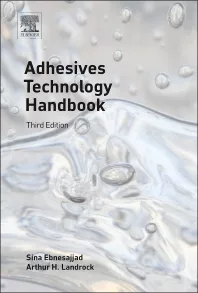Window Sealant Goes Green
BASF
promotes energy-efficient windows with flexible sealant.

 With the passage of President Obama’s economic stimulus
package, more than $50 billion in funding is available to modernize schools and
federal buildings. Replacing older windows with new units that incorporate
warm-edge thermoplastic spacer (TPS) technology can help upgrade these
facilities while improving their energy efficiency.
With the passage of President Obama’s economic stimulus
package, more than $50 billion in funding is available to modernize schools and
federal buildings. Replacing older windows with new units that incorporate
warm-edge thermoplastic spacer (TPS) technology can help upgrade these
facilities while improving their energy efficiency.
“Windows are often overlooked when insulation needs are evaluated, but windows with TPS technology represent a significant opportunity to achieve greater energy efficiency and reduce heating and cooling costs,” said Markus Kamieth, Ph.D., group vice president, Performance Chemicals, BASF in North America. “BASF promotes TPS technology because we believe it is the most sustainable solution for new windows.”
TPS is a flexible sealant that replaces aluminum spacers in double- and triple-pane windows. These windows outperform the metal-based spacer systems, which actually allow heat to be drawn out of a building during the winter and heat from the sun to be conducted into a building during the summer.
Kamieth said that BASF recently conducted an eco-efficiency analysis that found windows with TPS technology are better for the environment and have lower lifecycle costs than competitive technologies.
TPS sealants are distributed by companies such as ADCO Global Inc. (Chicago), which uses Oppanol® polyisobutylene (PIB) from BASF as adhesive ingredients. Energy efficient windows with TPS are available from manufacturers such as TRACO of Cranberry Township, PA.
Architects including Philip Elia of Elia Design, Troy, MI, are specifying windows with TPS systems for educational building projects because they are able to meet stringent design requirements, as well as energy efficiency needs.
One high-profile example is the historic Argonaut Building in Detroit, the former General Motors (GM) Design Center, which is being renovated into a multi-use building for the College for Creative Services (CCS). The Argonaut was built in the late 1920s by well-known architect Albert Kahn and has been vacant since 1999. GM donated the building to CCS in 2006.
“The building will encompass a graduate design school, a 300-student dorm, an 800-student arts-themed charter school for grades 6-12, a cafeteria, a 400-seat auditorium, commercial office space, and a specialized clay model and computer laboratories - all of which have different heating, ventilating, and air conditioning (HVAC) performance criteria,” Elia said. “State, national and city historical requirements were satisfied within stringent budget guidelines.”
 Elia selected TRACO’s NX-300 Window System with the
NEXGENTM Energy SpacerTM for its
performance in a cold Michigan
environment. The NX-300 is a performance window product that meets current and
future Energy Star® requirements and contributes to the
criteria of the Leadership in Energy and Environmental Design (LEED) Green Building
Rating SystemTM, and the American Society of Heating,
Refrigerating and Air-Conditioning Engineers (ASHRAE) Design Options.
Elia selected TRACO’s NX-300 Window System with the
NEXGENTM Energy SpacerTM for its
performance in a cold Michigan
environment. The NX-300 is a performance window product that meets current and
future Energy Star® requirements and contributes to the
criteria of the Leadership in Energy and Environmental Design (LEED) Green Building
Rating SystemTM, and the American Society of Heating,
Refrigerating and Air-Conditioning Engineers (ASHRAE) Design Options.
“The standard features of the NX-300 windows allowed for the design of a relative humidity (RH) value to ensure a healthy environment for students and clay model laboratories,” Elia said. “At the same time, we were able to maintain the historical sightlines of the original steel windows, a requirement by all three historical agencies, and a historically accepted installation technique within the existing triple-wythe brick masonry exterior wall.
“With the use of TRACO NEXGEN energy efficient windows as an integral element of the sustainable and historical design, the Argonaut Building will be an efficient building in every aspect,” Elia said.
Robin Randall, vice president of Marketing for TRACO, noted that in addition to their energy-saving features, windows with TPS technology offer high resistance to stress caused by a variety of environmental conditions.
“These windows are better able to accommodate any type of stress, making them less prone to breakage in the event of high winds or other acts of nature. Windows with TPS can be built in virtually any shape or size to give architects the flexibility to bring their vision to life,” said Randall. “Our customers consider these windows to be the ultimate warm-edge technology available in the market, and we are committed to providing them with high-quality, high-performance, and competitively priced products.”
Ron Vollmer, business manager for ADCO’s Insulating Glass and Construction Products, said his company selected Oppanol PIB because it combines low moisture transmission rates and low gas permeability values with strong adhesion and great elasticity.
“Oppanol PIB is the primary polymer for TPS sealants because it is flexible, waterproof and resistant to UV radiation. It is also extremely durable,” he said.
BASF provides information about TPS technology on the Web site www2.basf.us/pib_derivatives/windows, which includes information for homeowners, commercial owners, architects, builders and window manufacturers about the energy efficiency and durability of TPS. For more information about BASF’s Oppanol PIB, visit www2.basf.us/pib_derivatives.
Oppanol is a registered trademark of BASF SE. Energy Star is a trademark of the United States Department of Energy. LEED is a trademark of the U.S. Green Building Council.

Argonaut Building in Detroit, the former General Motors (GM) Design Center, which is being renovated into a multi-use building for the College for Creative Services (CCS). The Argonaut was built in the late 1920s by well-known architect Albert Kahn and has been vacant since 1999. GM donated the building to CCS in 2006.
A. Alfred Taubman Center building photo courtesy of DigDowntownDetroit.com, www.flickr.com/photos/digdowntowndetroit/4424995424.
A. Alfred Taubman Center building photo courtesy of DigDowntownDetroit.com, www.flickr.com/photos/digdowntowndetroit/4424995424.

“Windows are often overlooked when insulation needs are evaluated, but windows with TPS technology represent a significant opportunity to achieve greater energy efficiency and reduce heating and cooling costs,” said Markus Kamieth, Ph.D., group vice president, Performance Chemicals, BASF in North America. “BASF promotes TPS technology because we believe it is the most sustainable solution for new windows.”
TPS is a flexible sealant that replaces aluminum spacers in double- and triple-pane windows. These windows outperform the metal-based spacer systems, which actually allow heat to be drawn out of a building during the winter and heat from the sun to be conducted into a building during the summer.
Kamieth said that BASF recently conducted an eco-efficiency analysis that found windows with TPS technology are better for the environment and have lower lifecycle costs than competitive technologies.
TPS sealants are distributed by companies such as ADCO Global Inc. (Chicago), which uses Oppanol® polyisobutylene (PIB) from BASF as adhesive ingredients. Energy efficient windows with TPS are available from manufacturers such as TRACO of Cranberry Township, PA.
Architects including Philip Elia of Elia Design, Troy, MI, are specifying windows with TPS systems for educational building projects because they are able to meet stringent design requirements, as well as energy efficiency needs.
One high-profile example is the historic Argonaut Building in Detroit, the former General Motors (GM) Design Center, which is being renovated into a multi-use building for the College for Creative Services (CCS). The Argonaut was built in the late 1920s by well-known architect Albert Kahn and has been vacant since 1999. GM donated the building to CCS in 2006.
“The building will encompass a graduate design school, a 300-student dorm, an 800-student arts-themed charter school for grades 6-12, a cafeteria, a 400-seat auditorium, commercial office space, and a specialized clay model and computer laboratories - all of which have different heating, ventilating, and air conditioning (HVAC) performance criteria,” Elia said. “State, national and city historical requirements were satisfied within stringent budget guidelines.”

“The standard features of the NX-300 windows allowed for the design of a relative humidity (RH) value to ensure a healthy environment for students and clay model laboratories,” Elia said. “At the same time, we were able to maintain the historical sightlines of the original steel windows, a requirement by all three historical agencies, and a historically accepted installation technique within the existing triple-wythe brick masonry exterior wall.
“With the use of TRACO NEXGEN energy efficient windows as an integral element of the sustainable and historical design, the Argonaut Building will be an efficient building in every aspect,” Elia said.
Robin Randall, vice president of Marketing for TRACO, noted that in addition to their energy-saving features, windows with TPS technology offer high resistance to stress caused by a variety of environmental conditions.
“These windows are better able to accommodate any type of stress, making them less prone to breakage in the event of high winds or other acts of nature. Windows with TPS can be built in virtually any shape or size to give architects the flexibility to bring their vision to life,” said Randall. “Our customers consider these windows to be the ultimate warm-edge technology available in the market, and we are committed to providing them with high-quality, high-performance, and competitively priced products.”
Ron Vollmer, business manager for ADCO’s Insulating Glass and Construction Products, said his company selected Oppanol PIB because it combines low moisture transmission rates and low gas permeability values with strong adhesion and great elasticity.
“Oppanol PIB is the primary polymer for TPS sealants because it is flexible, waterproof and resistant to UV radiation. It is also extremely durable,” he said.
About the Company
BASF Corp., headquartered in Florham Park, NJ, is the North American affiliate of BASF SE, Ludwigshafen, Germany. BASF has more than 15,000 employees in North America, and had sales of approximately $17.5 billion in 2008. For more information about BASF’s North American operations, visit www.basf.com/usa.BASF provides information about TPS technology on the Web site www2.basf.us/pib_derivatives/windows, which includes information for homeowners, commercial owners, architects, builders and window manufacturers about the energy efficiency and durability of TPS. For more information about BASF’s Oppanol PIB, visit www2.basf.us/pib_derivatives.
Oppanol is a registered trademark of BASF SE. Energy Star is a trademark of the United States Department of Energy. LEED is a trademark of the U.S. Green Building Council.
SIDEBAR: The Eco-Efficiency Tool
Based on the ISO 14040 standard for lifecycle analysis, BASF’s eco-efficiency analysis is a strategic tool that quantifies the sustainability of products or processes. It is a comprehensive comparison of two or more products analyzed from the end use perspective. BASF’s eco-efficiency analysis tool was developed jointly with an external consultant in 1996. More than 400 eco-efficiency studies have been completed globally to date for customers, suppliers and regulatory agencies. The methodology was validated by TÜV, an independent company that certifies the safety and quality of new and existing products, systems, and services; and by NSF International, an independent, not-for-profit organization committed to improving and protecting public health and the environment.Links
Looking for a reprint of this article?
From high-res PDFs to custom plaques, order your copy today!






